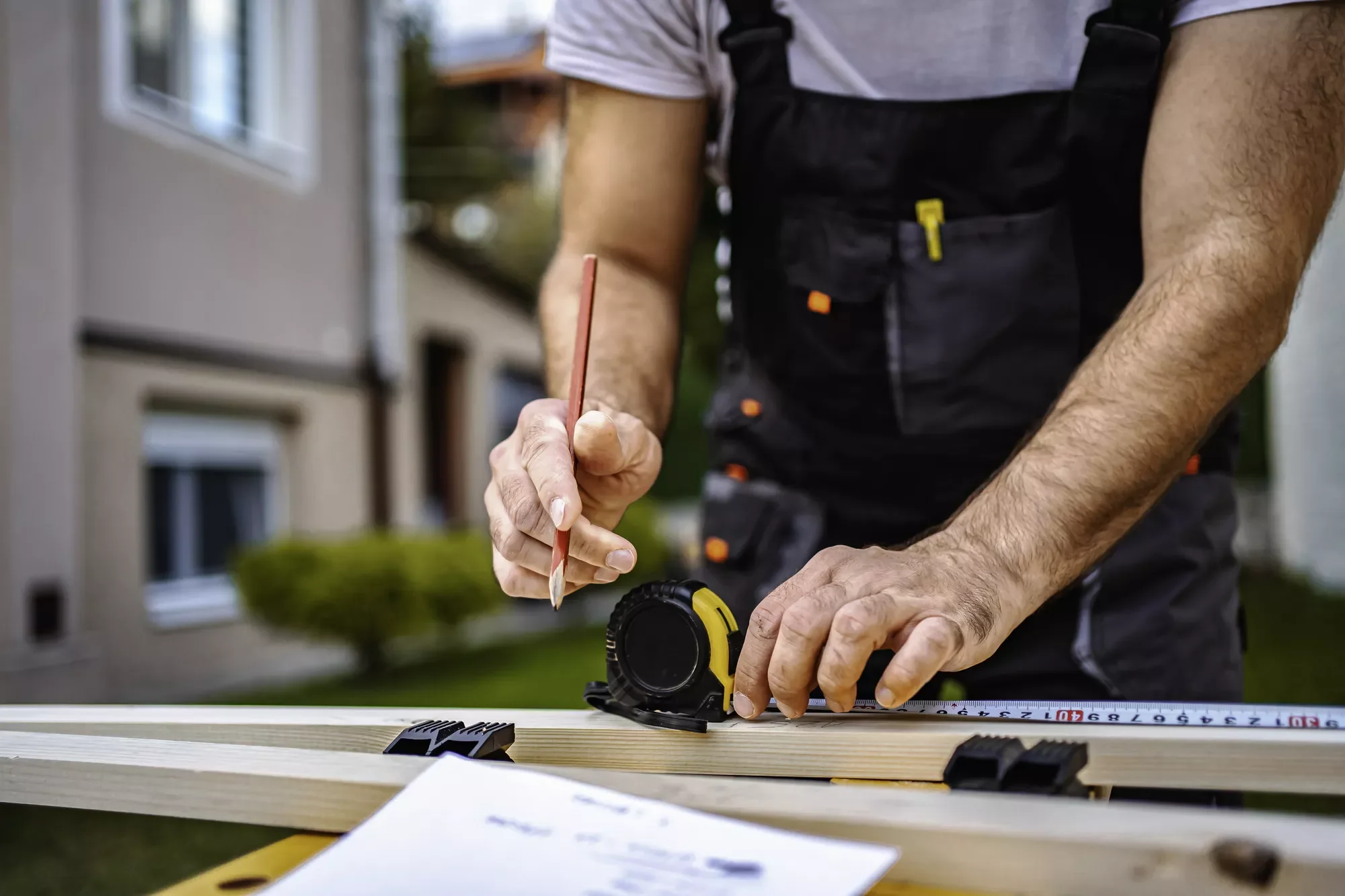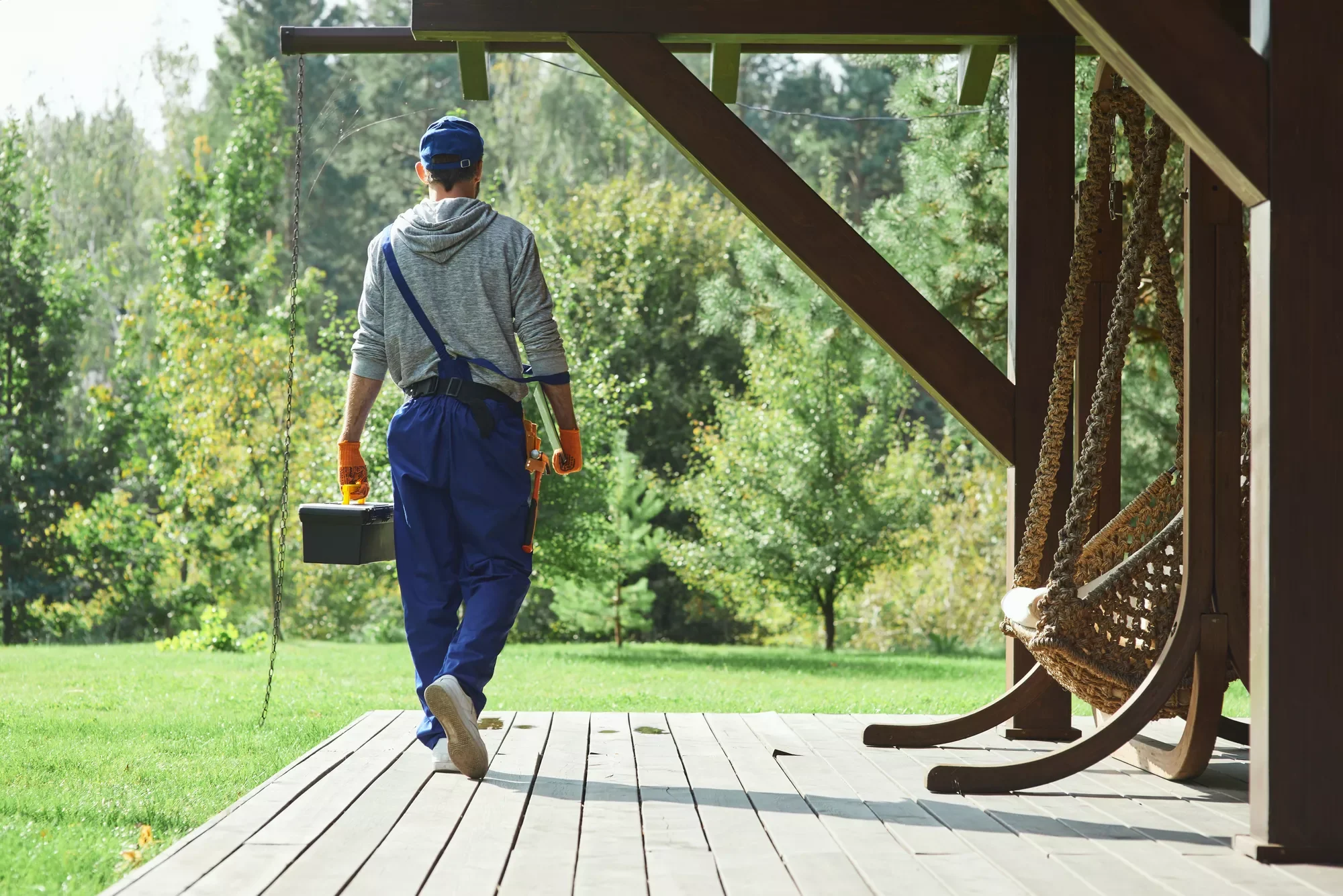Deck Inspection Requirements for Buyers & Sellers in California
Understanding deck inspection requirements in California is essential to protecting your investment. Decks are more than outdoor features—they’re structural elements that must meet safety, design, and compliance standards. When properly inspected, they safeguard your property’s value and the people who use it.
At The Sterling Watson Collective, we’ve seen how a single overlooked beam or corroded fastener can compromise an entire structure. This guide breaks down what every homeowner, buyer, and seller should know about California’s deck inspection laws, timelines, and responsibilities.
Understanding Deck Inspection Requirements in California
Deck inspections are formal evaluations that confirm a deck’s structural soundness, material condition, and adherence to state building codes. These assessments identify potential hazards before they turn into expensive liabilities.
In California, deck code inspection requirements exist to ensure that both private homeowners and multi-unit property owners maintain safe, long-lasting decks. With the state’s varied weather, seismic activity, and aging building stock, inspections have become a key part of real estate due diligence and ongoing maintenance.
Before we look at who handles inspections and what professionals check, let’s explore why these requirements are especially important in California.
Why Deck Inspections Matter for California Property Owners
Decks endure years of exposure to sun, rain, moisture, and temperature shifts. Over time, even the strongest materials weaken. Routine inspections catch early signs of deterioration, preventing injury and avoiding major repairs later.
From a property-value standpoint, inspections also offer transparency. Buyers gain confidence knowing the structure meets standards, while sellers protect themselves from legal disputes. Beyond that, compliance with California’s regulations is a matter of safety and liability—especially for landlords and HOAs.
When it comes to how often are deck inspections required in California, frequency depends on the type of property and the law that applies. Some inspections are mandated by state code, while others are highly recommended as part of best practices.
California Deck Inspection Laws and Compliance Framework
California has established two major laws that outline inspection standards for decks, balconies, and other elevated structures. Understanding these laws helps property owners stay compliant and avoid fines.
Overview of State Regulations
The state’s deck safety framework is built around two key laws—SB 721 and SB 326. Both were enacted to prevent failures caused by hidden rot or structural weakness and to ensure decks supporting occupants are regularly examined by licensed professionals.
What SB 721 Covers
• Applies to: Multifamily rental buildings (three or more units)
• Frequency: Every six years
• Inspector Qualifications: Licensed architect, structural engineer, or contractor
SB 721 focuses on the structural integrity of exterior elevated elements like balconies, decks, and stairways. Property owners must correct any deficiencies within 120 days of receiving an inspection report. Documentation should be kept for at least two inspection cycles.
What SB 326 Covers
• Applies to: Condominium associations and HOAs
• Frequency: Every nine years
• Inspector Qualifications: Licensed structural engineer or architect
SB 326 places responsibility on associations to schedule inspections, maintain reports, and address recommended repairs. It ensures shared decks and balconies meet the same safety expectations as rental properties.
Local Code Considerations
Some municipalities, such as Los Angeles and San Francisco, enforce additional guidelines or shorter reporting deadlines. Partnering with a local engineering team familiar with both state and municipal compliance helps streamline approval and documentation.
Once you understand these legal frameworks, it becomes clear that buyers, sellers, and property owners all play distinct roles in keeping decks compliant and safe.
Who Is Responsible for Deck Inspections?
Deck inspection responsibilities can vary depending on your role in a real estate transaction. Understanding who is accountable helps avoid misunderstandings and legal issues later.
Buyer Responsibilities
For buyers, requesting or reviewing a current deck inspection is an important part of due diligence. A professional report can reveal hidden water damage, loose connections, or outdated construction that might affect the sale price. Buyers often use this information to negotiate repairs or closing credits before finalizing a purchase.
Commissioning a new inspection is wise when purchasing older homes or those in coastal and hillside areas, where weather and shifting soil accelerate deck wear.
Seller Responsibilities
Sellers are legally obligated to disclose any known structural or safety defects, including deck issues. Conducting a pre-listing deck inspection not only demonstrates transparency but also gives sellers time to complete necessary repairs.
A recent inspection record adds credibility to listings, speeds up negotiations, and reduces the risk of last-minute delays once an offer is made. Both parties benefit when inspection findings are addressed proactively.
Knowing who’s accountable sets the stage for understanding what a professional inspection actually involves.
What Inspectors Evaluate During a Deck Inspection
A professional deck inspection is comprehensive. It evaluates both visible and concealed components to confirm that the deck meets California’s structural and safety standards.
Structural Integrity Assessment
Inspectors begin by examining beams, posts, joists, and connections that bear the deck’s weight. They check for warping, cracks, rust, and shifting. A secure structural framework is the foundation of any safe deck—especially those that extend from upper levels or hillside homes.
Water Damage and Decay
Moisture is one of California’s biggest threats to wooden structures. Inspectors look for rot, mildew, and corrosion around joints and flashing. Identifying leaks or compromised waterproof membranes early prevents deeper structural damage and potential collapse.
Railing, Hardware, and Fastener Safety
Guardrails and handrails must meet specific height and load standards under California Building Code. Inspectors verify that bolts, anchors, and fasteners are firmly attached and free of rust or wear that might weaken support over time.
Documentation and Compliance Reports
At the end of the inspection, the professional provides a written report outlining findings, photos, and recommendations. For SB 721 or SB 326 compliance, these reports must be retained and updated according to state timelines.
Once the inspection report is complete, it can directly influence how a property is priced, marketed, or repaired prior to sale.
How Deck Inspections Impact Real Estate Transactions
Deck inspections directly influence how a property is perceived and valued during sale. For buyers, inspection findings can uncover opportunities for negotiation. For sellers, a clean report enhances credibility and market appeal.
Negotiation Leverage
Inspection findings can serve as leverage for both parties. Buyers might request that structural repairs be completed or negotiate a reduced price. Sellers, on the other hand, can use a clean inspection report to strengthen their asking price and build trust with potential buyers.
Pre-Sale Advantages for Sellers
A proactive inspection saves time during escrow and demonstrates responsible ownership. Sellers who address repairs upfront often experience smoother, faster transactions and fewer contingencies during closing.
Preventing Delays and Liabilities
Failing to perform inspections early may lead to repair permits or compliance delays that disrupt timelines. Coordinating with experienced inspectors ensures a streamlined process that satisfies state and lender requirements.
With legal obligations and real estate implications in mind, property owners naturally want to know how often these inspections should take place.
How Often Are Deck Inspections Required in California
The question of how often are deck inspections required in California depends largely on property classification and building use. The state provides clear intervals, but regular maintenance in between inspections is equally important.
State-Mandated Timelines
• SB 721: Requires deck inspections every six years for multifamily rental buildings.
• SB 326: Requires inspections every nine years for condominium and HOA properties.
• Owners must keep written proof of compliance and repair completion for future reviews.
Residential & Single-Family Recommendations
Single-family homes are not legally bound by these laws, but it’s wise to schedule professional inspections every two to three years. Annual self-checks after storms, heavy rainfall, or earthquakes are also recommended.
Commercial & Mixed-Use Properties
Because of heavier foot traffic, commercial decks and rooftop structures should be inspected every two to four years. These proactive checks prevent costly downtime and ensure compliance with occupancy regulations.
Why Following Inspection Requirements Protects Your Investment
Complying with deck inspection requirements does more than fulfill legal obligations—it preserves property integrity. Regular inspections identify problems before they escalate, saving thousands in repairs and preventing liability claims.
For sellers, a complete inspection record demonstrates accountability. For buyers, it provides assurance that the structure they’re investing in meets California’s stringent standards. For property managers, it ensures ongoing compliance and tenant safety.
In short, inspections are not just checkboxes—they are long-term safeguards for value, safety, and peace of mind.
How The Sterling Watson Collective Supports California Property Owners
At The Sterling Watson Collective, our team combines technical precision with a strong understanding of local regulations. Based in Los Angeles, we specialize in helping homeowners, buyers, and associations meet California’s deck and structural safety requirements.
Local Expertise in Structural Safety
We’re well-versed in both SB 721 and SB 326, as well as local building codes across Los Angeles County. Our experience ensures that each inspection is executed to the highest standard of accuracy and compliance.
End-to-End Compliance Support
From coordinating inspections and reviewing reports to assisting with retrofit recommendations, we help clients maintain full legal and structural compliance. We also guide property owners on preventive maintenance schedules that align with California’s evolving safety laws.
Protecting Clients’ Investments
Our goal is to give every client confidence in their property’s structural health. Whether you’re buying, selling, or maintaining, we focus on ensuring safety without compromising design or value.
When you’re ready to move forward, we’ll make sure your deck inspection process is efficient, compliant, and fully documented.
Schedule Your Deck Inspection Consultation Today
Don’t wait for a small issue to become a major expense. Schedule a professional consultation with The Sterling Watson Collective and ensure your property meets all of California’s deck inspection and safety standards.
Our engineers and building specialists are ready to assess your structure, review compliance reports, and provide tailored recommendations. Contact us today to safeguard your property, stay compliant, and protect what matters most—your investment and your peace of mind.
Frequently Asked Questions
-
Delaying inspections can lead to undetected structural issues, moisture damage, or safety hazards that may later require expensive repairs. Non-compliance with SB 721 or SB 326 can also result in fines or legal complications.
-
While homeowners can conduct basic visual checks, only licensed professionals are qualified to perform California-compliant inspections. DIY evaluations often miss hidden decay or code violations that professionals are trained to identify.
-
If a deck fails inspection, owners are typically given a set period—usually 120 days—to complete necessary repairs. Once fixed, a follow-up inspection verifies compliance and closes the report.
-
Not necessarily. Many older homes can pass inspection if they’ve been properly maintained. However, older materials and outdated fasteners often need upgrades to meet current safety standards.
-
Yes. Insurance providers may deny coverage for claims related to uninspected or non-compliant decks. Similarly, buyers may reconsider offers if safety issues are unresolved.


